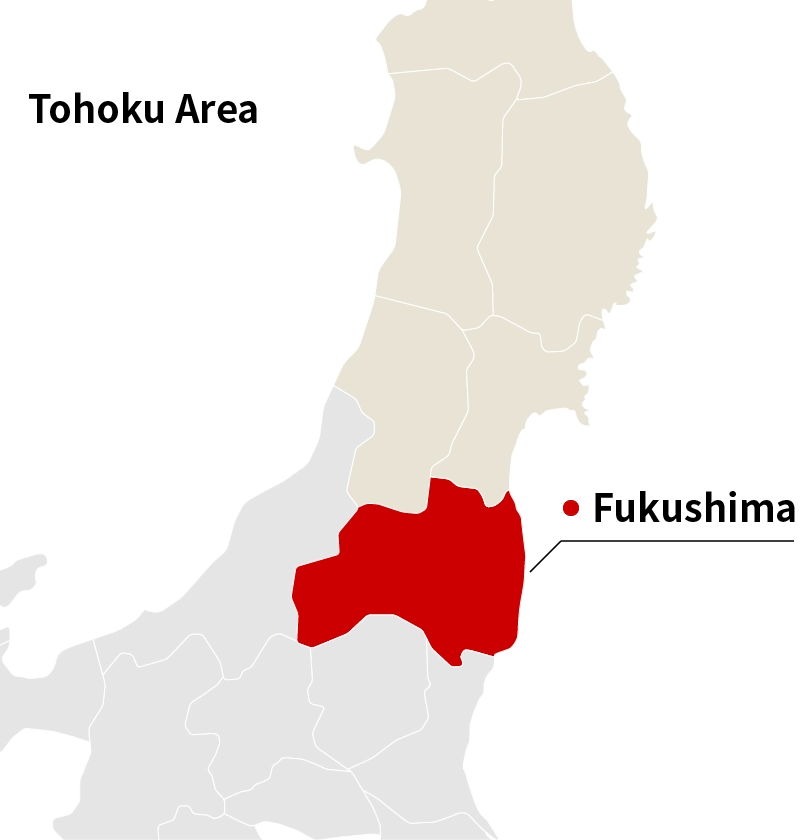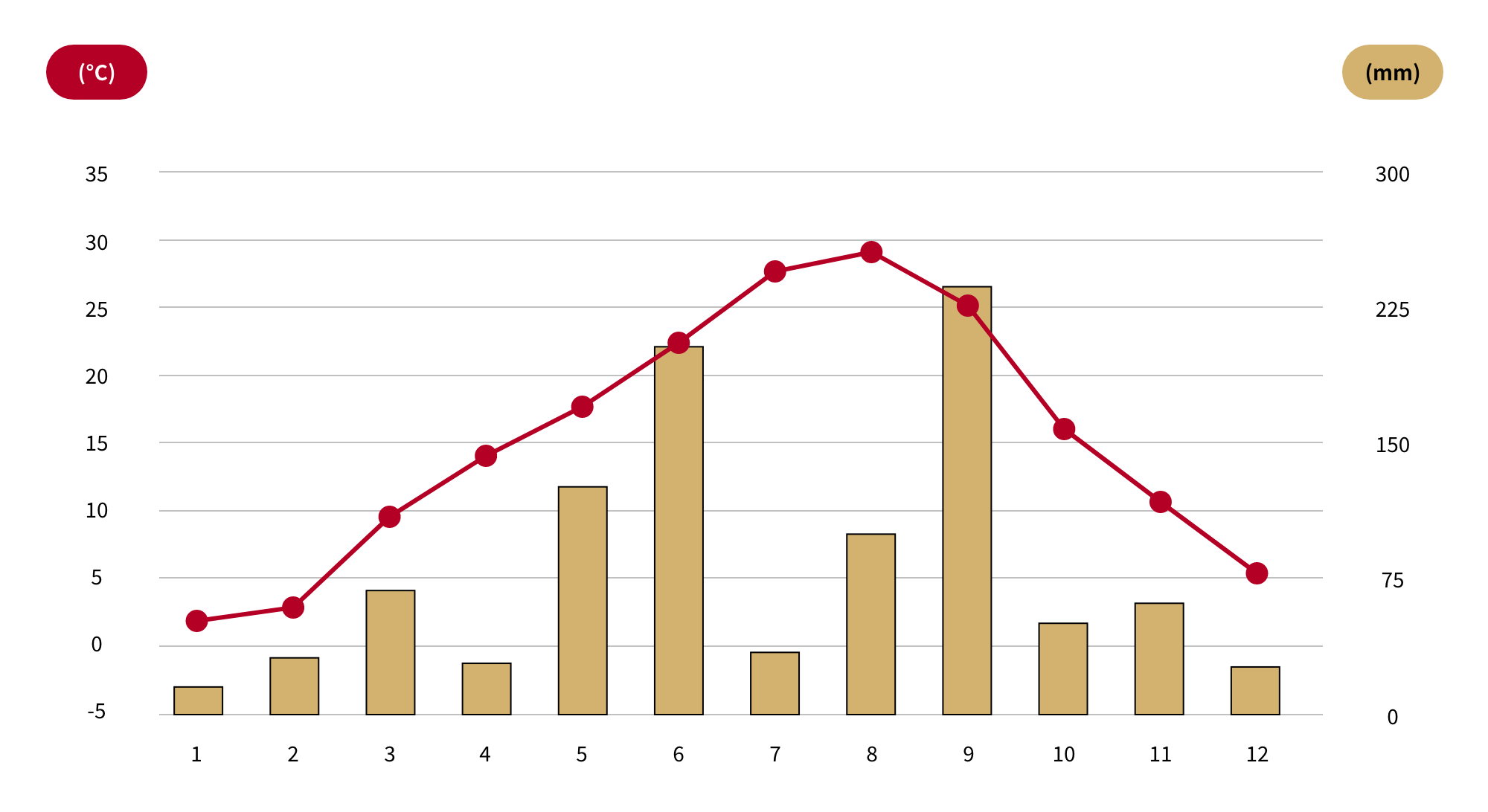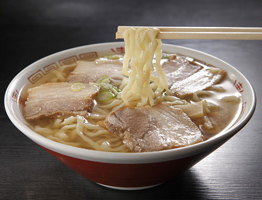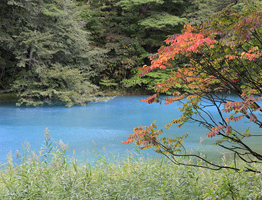Sức hấp dẫn của Du học Nhật Bản
Khám phá! Cuộc sống NIPPON theo từng vùng riêng biệt
Fukushima
Khái quát về vùng
Tỉnh Fukushima tự hào là tỉnh có diện tích lớn thứ 3 ở Nhật, có thiên nhiên hùng vĩ, các món ăn ngon, và những người dân tính tình thân thiện, địa hình trong tỉnh khá phong phú được chia thành 3 khu vực chính. "Khu vực Aizu" nơi có thể tham quan thiên nhiên phong phú và nhiều di tích cổ nổi tiếng Aizuhanshi Yukari. "Khu vực Nakadori" nơi đầy ắp các loài hoa xinh đẹp và hoa quả mọng nước. " Khu vực Hamadori" nơi nhìn ra biển Thái Bình Dương và có thể ngắm cảnh thiên nhiên hùng vĩ. Mỗi khu vực đều có phong thổ, văn hoá, khí hậu khác nhau tạo nên sự hấp dẫn của từng nơi, gây cho du khách đến thăm nhiều điều ngạc nhiên.
 *Bản đồ này bỏ qua địa hình và quần đảo, đồng thời không hiển thị toàn bộ các khu vực của Nhật Bản.
*Bản đồ này bỏ qua địa hình và quần đảo, đồng thời không hiển thị toàn bộ các khu vực của Nhật Bản.
Đường đến
- Trường hợp sử dụng tàu Shinkansen hoặc tàu điện
-
Trong tỉnh còn có ga tàu Shinkansen như ga Koriyama.
Từ Tokyo
Ga Tokyo
1 giờ 31 phútGa Fukushima
Địa điểm mà người dân bản địa khuyên

Soma Nomaoi
Lễ hội Soma Nomaoi được tổ chức ở thành phố Soma thuộc tỉnh Fukushima vào tháng 7 hàng năm có lịch sử trên 1000 năm. Nhất định bạn hãy thử trải nghiệm thời kỳ chiến quốc với hơn 500 kị binh cưỡi ngựa mặc áo giáp phi như bay nhé.

Suối nước nóng
Tỉnh Fukushima có hơn 130 suối nước nóng, ở từng khu vực lại có phố suối nước nóng với bản sắc riêng. Bạn có thể ở lại qua đêm hoặc đi về trong ngày, bạn hãy thử đi du lịch suối nước nóng ở Fukushima xem sao nhé!
Món ăn mà người dân bản địa khuyên
-

Mỳ hành
Trạm bưu điện " Ouchi -Juku" còn lưu lại hình bóng thời Edo của thị trấn Shimogo thuộc tỉnh Fukushima. Món mỳ hành nổi tiếng với đặc điểm là sử dụng 1 cây hành kèm theo bát mỳ để thay đũa. Bạn hãy thử thách xem có thể ăn mỳ khéo léo bằng 1 cây hành không nhé.
-

Hoa quả
Ở Fukushima, nhờ khí hậu và phong thổ đặc hữu của vùng trũng lòng chảo nên bạn có thể thưởng thức hoa quả tươi suốt 4 mùa, đầu hè có quả anh đào, giữa hè có đào, mùa thu có lê và nho, đầu đông có táo mật v.v. Bạn có thể hái quả suốt quanh năm.
Khí hậu (Nhiệt độ/lượng mưa)
Ở khu vực Nakadori, vào mùa hè, vùng núi không quá nóng, nhưng ở vùng lòng chảo thì lại khá oi bức và ẩm ướt. Mùa đông có gió lạnh thổi qua và tuyết cũng thường rơi. Khu vực Aizu có khí hậu đặc trưng của vùng ven biển Nhật Bản, mùa hè mát mẻ ở các vùng núi, nhưng tại vùng lòng chảo lại trở nên oi bức và ẩm ướt. Vào mùa đông có tuyết rơi dày và khí hậu lạnh buốt giá. Khu vực Hamadori có khí hậu biển, mùa hè có gió mát từ biển thổi vào nên khá dễ chịu, mùa đông cũng tương đối ấm áp và chỉ có vài ngày có tuyết rơi.
Nhiệt độ và lượng mưa hàng tháng

(Nguồn: Cơ quan Khí tượng Nhật Bản)
Vật giá
-
Giá Thuê nhà
41.103 yên
-
Chi phí điện, nước và gas
10.840 yên
-
Ăn ngoài
(mỳ)640 yên
-
Bánh mì: 1kg
544 yên
-
Sữa: 1ℓ
295 yên
*Nguồn
- Giá thuê nhà
“Điều tra thống kê về nhà ở và đất đai: Năm 2023” từ Cổng thông tin tổng hợp thống kê Chính phủ
Giá thuê nhà trung bình hàng tháng (không bao gồm các căn nhà cho thuê với giá 0 yên) của các căn nhà cho thuê tư nhân (nhà chỉ dùng để ở) có diện tích dưới 29㎡ tại các thành phố trực thuộc tỉnh - Chi phí điện, nước và gas
“Điều tra về sinh kế (Bảng hỏi về sinh kế và thu chi gia đình): Năm 2023” từ Cổng thông tin tổng hợp thống kê Chính phủ
Để tính mức tiêu dùng trung bình hàng tháng cho mỗi người về điện, nước, gas tại thành phố trực thuộc tỉnh, người ta lấy tổng chi tiêu hằng năm của mỗi hộ gia đình cho các khoản này, chia đều cho 12 tháng rồi chia tiếp cho số thành viên của mỗi hộ. - Ăn ngoài (ramen), bánh mì: 1kg, sữa: 1ℓ
“Điều tra thống kê về giá bán lẻ (Bảng hỏi về xu hướng): Tháng 8 năm 2024” từ Cổng thông tin tổng hợp thống kê Chính phủ
Link liên kết liên quan
Xếp hạng các quốc gia về số lượng du học sinh
Nepal
Trung Quốc
Myanmar
Tổng số du học sinh tại Nhật Bản: 279.274 người
Tổng số du học sinh tại tỉnh Fukushima: 1.009 người
Từ “Điều tra về tình trạng du học sinh người nước ngoài” năm 2023
Danh sách các trường đại học ở địa phương
Nếu số trường học công bố thông tin trên mục “Trang tìm kiếm về trường học/lĩnh vực chuyên môn” của trang web này là 9 trường trở xuống, tên các trường sẽ được liệt kê mà không theo thứ tự cụ thể. Nếu có từ 10 trường trở lên, thông tin sẽ không được đăng trên trang này. Tuy nhiên, bạn có thể nhấn vào mục “Tiến đến trang tìm kiếm về trường học/lĩnh vực chuyên môn” bên dưới để tra cứu và xem danh sách các trường học.











